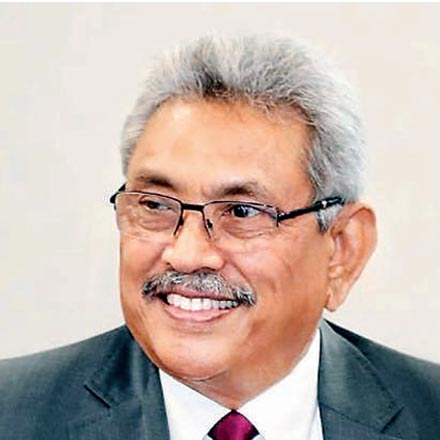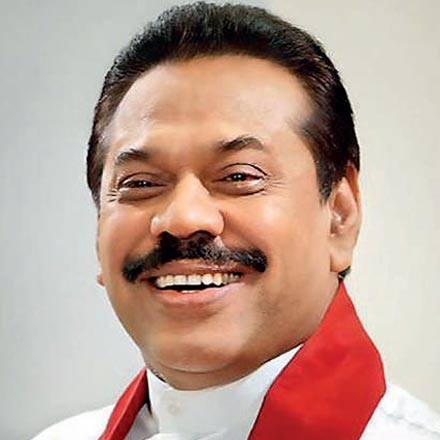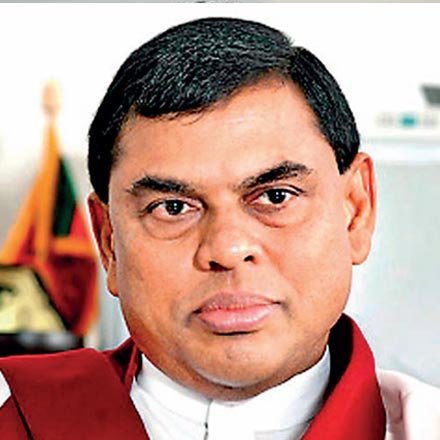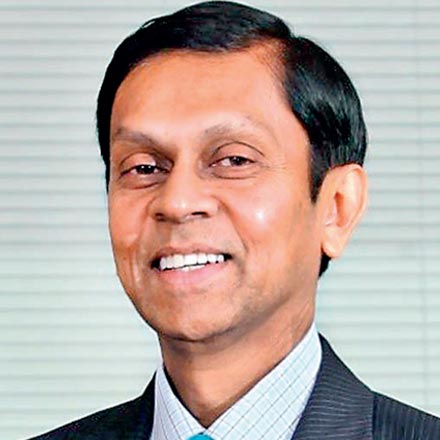Tuesday Dec 16, 2025
Tuesday Dec 16, 2025
Monday, 3 January 2022 00:30 - - {{hitsCtrl.values.hits}}

President Gotabaya Rajapaksa

Prime Minister Mahinda Rajapaksa

Finance Minister Basil Rajapaksa

Central Bank Governor Nivard Cabraal
|
 Celebration of the New Year with kiribath
Celebration of the New Year with kiribath
Sri Lanka has entered 2022. It is the tradition of Sri Lankans to celebrate the arrival of a new year with kiribath, a symbol of foretelling of happiness, prosperity, peace, and splendour. While kiribath is partaken at every home on the first of January itself, employees of both government and private sector will do so on the first day in office after the first.
Despite the gloomy economic situation in 2020 and 2021, almost all Sri Lankans had followed this tradition in 2022 too. This is an appreciable sign, because with kiribath, people will get a booster to build their self-confidence, and strength to face the extremely gloomy economy that is looming over them in the new year. That gloom again, not something they will face in the distant future but an experience they are having on a day-to-day basis right now.
Sri Lanka’s domestic economy is not bankrupt
Many have therefore chosen to brand Sri Lanka as a bankrupt country. This judgment may be correct with respect to Sri Lanka’s external economy. However, on close examination, it is found that Sri Lanka has not yet reached the bankruptcy level with respect to its domestic economy. That is because Sri Lanka’s domestic economy will become bankrupt if its government becomes bankrupt. A government becomes bankrupt if it is unable to generate revenue for its operations via taxation or cannot print any more money to finance the same. A government will face the latter situation if the people start refusing to accept the money it issues because its value is falling every minute due to hyperinflation.
Sri Lanka’s Government has not faced either of these situations so far. It can still raise tax revenue at the rate of about 9% of the country’s GDP, though it is a historically low level. Its inflation is still below 15% and there are no reports that its currency is being rejected by people for conducting transactions. Hence, Sri Lanka Government can run its domestic operations for a dozen of months more. Hence, if the Government is not yet bankrupt, the country is also not yet bankrupt with respect to its domestic operations.
But the foreign sector is not the same
But the same cannot be said about the country’s foreign sector. To run a smooth foreign sector operation, a country should have a comfortable stock of foreign exchange resources, known as foreign reserves. This is like the balance in the savings account which an ordinary citizen has. That balance will help the citizen to buy goods and services from outsiders if his current income is insufficient. Imagine a situation like this: his current income is 100 and he wants to spend 150. The excess expenditure of 50 can be met by him if he has a balance of 50 in his savings account. If the balance is below that he should necessarily borrow from someone the deficit in his income. If he runs out of potential lenders, he surely runs into problems.
Role of foreign reserves
The foreign reserves of a country also serve the same purpose. They help a country to finance a temporary gap in the current foreign exchange earnings. They are also useful for a country to prevent the exchange rate from unduly depreciating in the market. If there is a shortage of foreign currencies in the market forcing the exchange rate to depreciate, the country can prevent that temporary downfall by supplying the needed foreign currency out of its foreign exchange reserves. But if the country runs out of foreign reserves, it fails to attain both goals.
If there is no any outsider to bailout the country, it becomes bankrupt in its foreign operations. However, a bankruptcy on the foreign side has a contributory effect on the bankruptcy of the domestic side also. It happens through a fall in output, a consequential fall in government revenue, an increase in money printing, and a consequential increase in inflation. This last outcome will generate further cycles of economic downturn accelerating a country’s move toward bankruptcy.
How the vicious cycle works
This is how it happens. When the foreign exchange is short, a country cannot import essential raw materials and food items. As a result, the local production gets hampered. For instance, if a country cannot import essential fuel, it cannot maintain its transportation sector, produce electricity, and keep businesses and factories running. It adversely affects domestic production. When the domestic production is low, incomes are low, and as a result, government’s revenue generation is also low.
With low income and stubborn expenditure, the high budget deficit must be financed by the government through borrowings. When the borrowing options are limited due to the shrinkage of the domestic economy, the only available option is to print money and finance the budget. The increase in money supply will generate inflation and it will reactivate the whole cycle of economic downturn in an uncontrollable manner.
Depletion of foreign reserves
Sri Lanka’s gross official foreign reserves amounted to $ 7.6 billion as at end-December 2019. It was sufficient to finance more than five months of imports projected for 2020. However, the known foreign exchange liabilities on account of country’s debt servicing and other foreign exchange payments were much more than this stock of foreign assets. Hence, it was known at the beginning of 2020 that Sri Lanka rupee was under pressure for depreciation.
The independent economists had advised the Government to seek assistance from the International Monetary Fund, commonly called IMF, to avoid the imminent balance of payments crisis which the country would face in the months to come. However, the Government took a hard stance and proclaimed again and again that it would not seek IMF support and it was quite capable of handling the situation without outside support. This internal policy package now known as ‘homegrown policy’ was to be implemented to take the country out of the malaise. If it would have been successful, the Government would have got credit for bailing out the country through a pure homegrown policy, a rare distinction which it could have claimed for itself.
Outbreak of COVID-19 pandemic
But things fell apart soon. By February 2020, the entire globe was hit by a new pandemic in the form of an attack of coronavirus, now termed COVID-19. Sri Lanka at first did not take the threat seriously and refused to adopt the best practices which other countries had adopted. Yet, when the country was also hit by the outbreak and its rapid spread and the deadly effects were known, Sri Lanka too went for prolonged lockdown of the country and imposing travel restrictions. The main casualty was the economy which had a contraction of 3.6% in 2020.
The sector that suffered most was the external sector which underwent a decline in exports, remittances, and foreign capital flows. As a result, the foreign reserves began to decline, on one side, and the Government expenditure started ballooning, on the other. The Government reacted, instead of responding to the emerging situation. For the first time after 1977, the Government clamped import, exchange, and price controls on the economy which contributed to further compound the problem.
The result was the decline of the foreign exchange reserves further to $ 5.7 billion by end 2020 and further to $ 1.6 billion by end-November 2021. This level of foreign reserves was sufficient to finance only two-three weeks of future imports of the country. Still the Government refused to seek IMF assistance proclaiming that it had a ‘homegrown policy package’ and IMF was not the option for the country’s acute external sector issues.
Following MMT
Meanwhile, the Central Bank changed its monetary policy stance from the previous flexible inflation targeting or FIT to a policy prescription that had been promoted by a breakaway group of economists who called themselves Modern Monetary Theorists. Their ideology, called the Modern Monetary Theory or MMT, argued convincingly that there was nothing wrong in governments running budget deficits to create employment, output, and prosperity. This argument was based on the fact that government financing differed from private financing because, unlike individuals, governments are able to finance deficits by printing new money.
However, if the newly printed money can create a new demand in the economy, producers will step up production generating prosperity for people. Private people cannot do this miracle. Though the Central Bank had not admitted that it was following MMT, its monetary policy actions revealed that they were in line with the prescriptions pronounced by modern monetary theorists. They took the form of keeping interest rates low, credit to government high, and money supply above the safe levels. Interest rate structure was brought down to a level of 2-4% from a level of 8-12%.
Credit to Government from the Central Bank and commercial banks – a method of inflationary financing – increased by Rs. 3.7 trillion or by 159% during end-2019 to end-November 2021. Correspondingly, money supply increased by Rs. 3 trillion or nearly 39%. Signs of this are already visible with inflation accelerating from around 4% at end-2019 to 12% by end-2021. In the case of inflation, food inflation is now rising at around 22% per annum, an ominous development portending the oncoming of serious social and political chaos in the country.
Outcome of MMT
The inflationary surge is due to two policy errors made by the Government. Assured by the advocates of MMT that money does not affect inflation or exchange rate, the Government allowed the money stock to rise excessively. The result was an increase in the aggregate demand in money terms. According to MMT advocates, this should have led to an increase in the real output. That would have happened in countries with currencies which are used as reserve currencies by other nations. But Sri Lanka rupee is not a reserve currency and the outcome of the increase in the money stock was an undue increase in the demand for imports, prompting the Government to control imports including the importation of raw materials. It affected the production of goods and services.
The other policy error was the decision to convert the entire agriculture of the country to that based on organic fertilisers. This would have been a decision implemented over a long time period, say about 15 to 20 years. But the Government banned the import of chemical fertilisers and pesticides/insecticides/weedicides. They were essential inputs of agriculture that served as complementaries rather than substitutes. Hence, the other two inputs used for agriculture, land and labour, remained idle causing a reduction in agricultural outputs.
This caused to shrink the country’s food supply chain. With no foreign exchange to import foods from outside and local production declining, the increase in the aggregate demand caused the food prices to rise, increasing the overall inflation rate. However, these numbers are misleading since the numbers are deliberately kept at low due to the low weight of 28% allocated to food category in the Colombo Consumers’ Price Index, better known as CCPI. But the reality was that during the pandemic era, a household spent almost entirety of its income on foods rather than non-foods. Hence, the actual inflation would have been higher than what the numbers have revealed.
Stress in Sri Lanka’s external sector
Meanwhile, the external sector was under severe stress due to a shrinkage of foreign exchange inflows to the country. The Central Bank had kept the dollar-rupee rate at Rs. 203 artificially, though it had lost the ability to support that rate due to lack of foreign exchange reserves. There were no dollars available at that rate in banks. Importers and other users of foreign exchange had to wait in queues to get the needed dollars. This led to the establishment of a dynamic and lucrative black market in foreign exchange in the country.
Under normal circumstances, the margin at this market should not be more than Rs. 2 over the official rate. However, in the black market, the rate went up to about Rs. 250 to 260 per US dollar with a margin of Rs. 50 to 60.
|
Need for seeking IMF assistance
The Central Bank Governor Ajith Nivard Cabraal, instead of seeking IMF assistance, came up with a homegrown policy in a six-month Road Map announced on 1 October 2021. In the Road Map, he predicted a gross inflow of $ 10.85 billion during the first three months of the Road Map. However, as I presented in my previous article on the subject, they had been grossly overestimated and the reduction in the foreign reserves continued unabated. By end-November 2021, the reserves level fell to $ 1.6 billion with an immediately usable liquid forex level of $ 1.1 billion when the gold reserve and the position with IMF are taken out. This was a historically low-level looming over the entire country.
Meanwhile, the Central Bank continued to tap the short-term borrowing opportunities in December raising the gross reserve levels to $ 3.1 billion by end-2021. This is not a permanent solution and only a temporary palliative. Hence, in the new year, Sri Lanka will have to seek IMF assistance or expect the worst with respect to the exchange rate.
This is not the most pleasant option available to Sri Lankans.
(The writer, a former Deputy Governor of the Central Bank of Sri Lanka, can be reached at [email protected].)